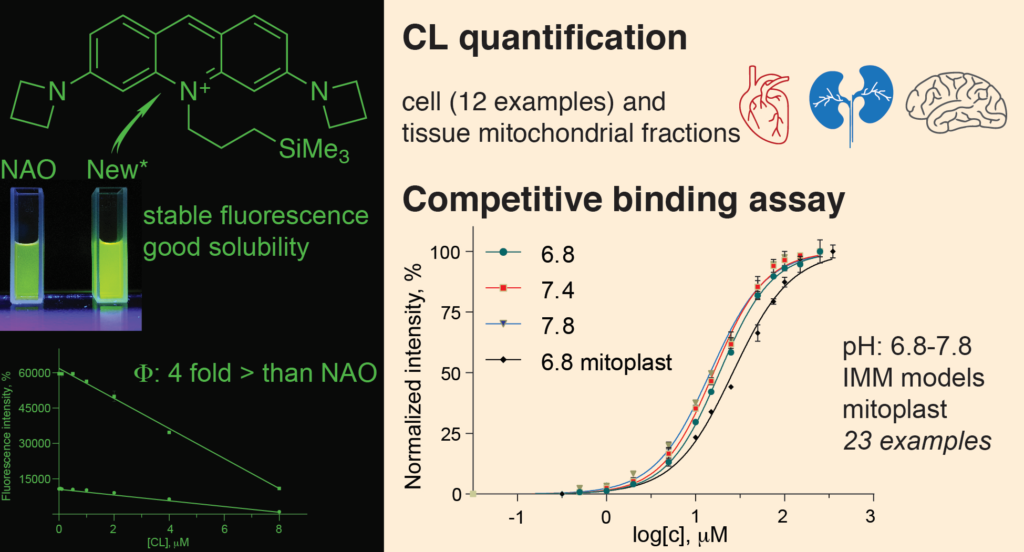Researchers at the Latvian Institute of Organic Synthesis (Pharmacomodulators synthesis group) have developed a method for cardiolipin (CL) quantitative analysis and therefore have highlighted using CL as a biomarker for the first time. This method will significantly facilitate the work of pharmacological laboratories buy helping them discover drugs for mitochondria-related disorders.
Cardiolipin is a key phospholipid responsible for many mitochondrial processes. It is vulnerable to oxidants and membrane destabilizing agents. Changes in CL level are usually associated with various diseases characterized by mitochondrial dysfunction, including ischemic heart diseases and cancer. Thus CL level could be used as a biomarker for the assessment of mitochondrial viability, while CL itself is an appealing molecular target for mitochondria-targeted drugs.
Existing methods for quantification of CL have significant drawbacks such as complicated multistep experimental procedures, and there is also no unified method for studying binding affinity for CL.
Pavel Arsenyan and Pavels Dimitrijevs have obtained a novel CL-specific fluorescent probe which possesses impressive photophysical properties and increased stability. Using the newly discovered probe, researchers have developed a simple and robust method for quantitative analysis of CL and an assay for the estimation of binding affinity for CL has been developed. Researchers analyzed 23 compounds of different nature to convince that the elaborated assay is convenient and suitable for high throughput screening of potential mitochondria-targeted agents.
This research is published in the journal “Sensors and Actuators B: Chemical” (IF= 7.46).
Read the article:
Dimitrijevs, P.; Arsenyan, P.*
Cardiolipin in the spotlight: Quantitative analysis and fluorescence-based competitive binding assay
Sens. Actuators B Chem. 2021, 346, 130537. DOI: 10.1016/j.snb.2021.130537

